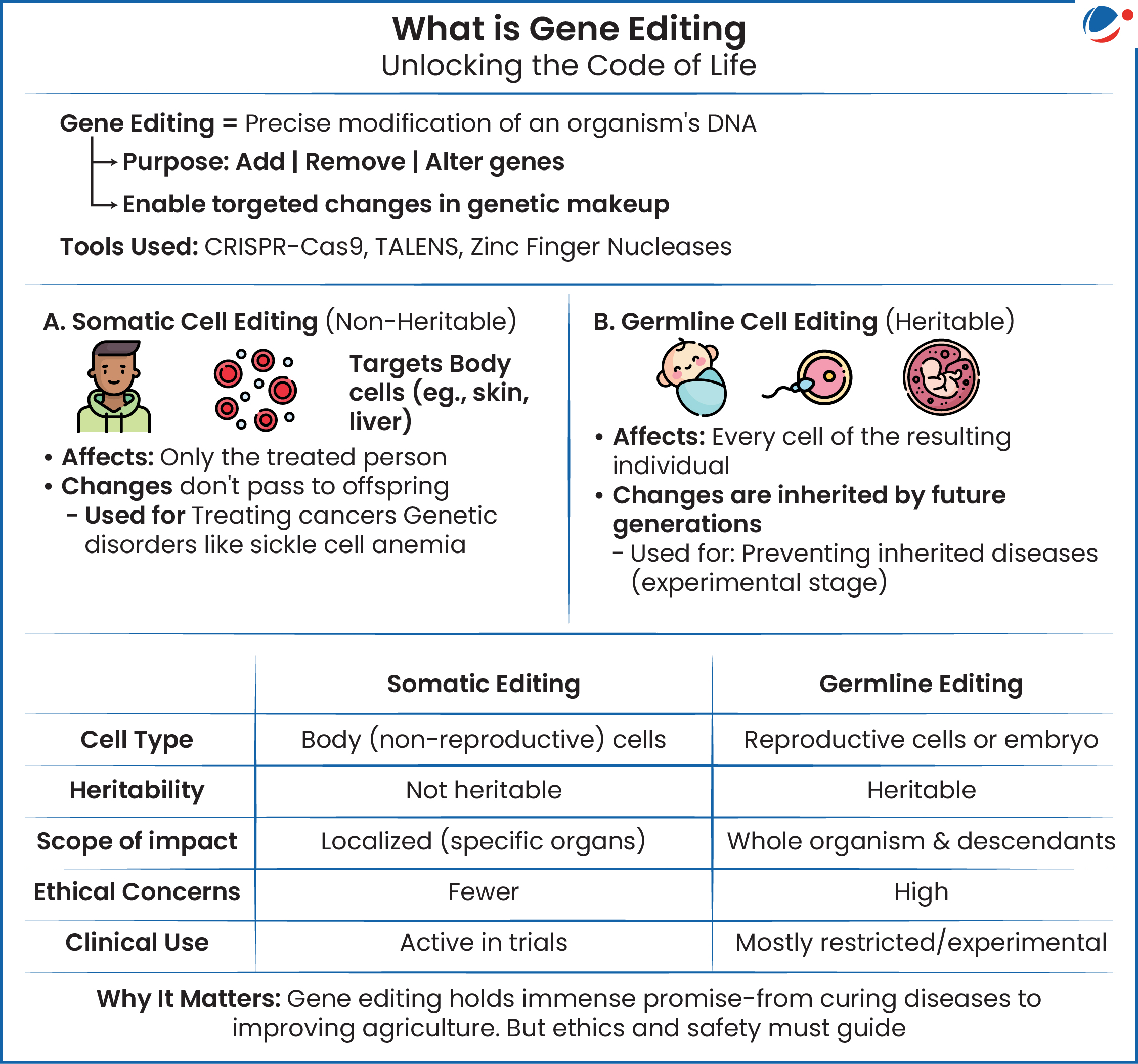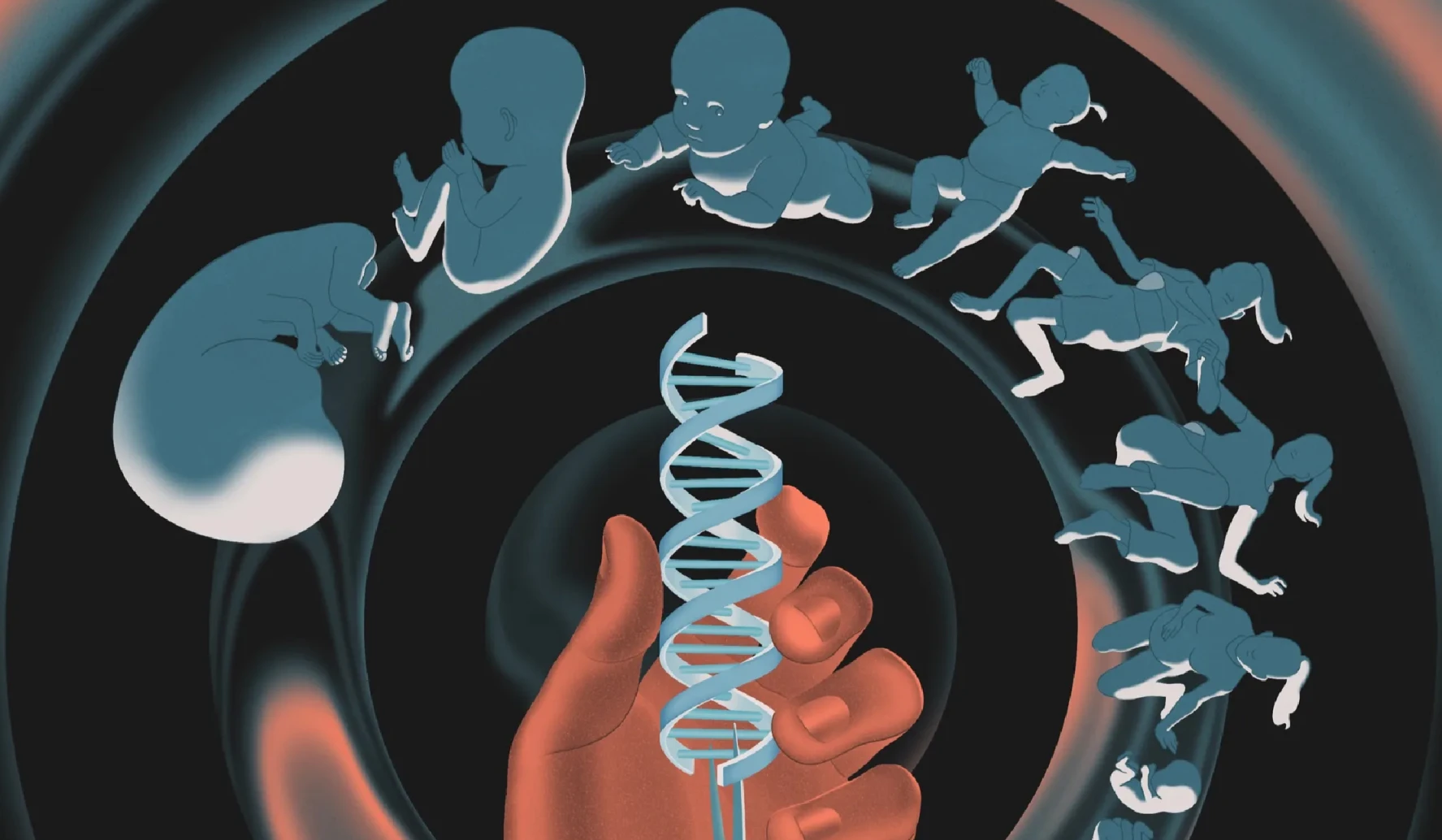Following the release of India’s first gene-edited rice variety recently, India’s first gene-edited sheep was developed using CRISPR-Cas9technology.
- CRISPR-Cas9 works on a cut-and-paste mechanism for DNA Strands.
- The 2020 Nobel Prize for Chemistry was awarded for their discovery.
About the research

- Myostatin gene in a lamb was edited boosting muscle growth by 30% (a trait found in some European breeds, such as the Texel, but absent in Indian breeds).
- No foreign DNA was added, making it different from transgenic animals.
- Thus, this technique makes the process efficient, safe, and potentially acceptable to both regulators and consumers.
- Earlier, a team of researchers at the National Dairy Research Institute (NDRI) had developed a gene-edited buffalo embryo.
Ethical Concerns in Gene Editing Animals
- Editing traits like intelligence, sex, or appearance may lead to the creation of designer babies, potentially creating a divide between the wealthy and others.
- It risks eugenics, promoting the idea of "improving" humans and increasing discrimination.
- Gene editing may cause off-target effects and mosaicism, which refers to mixed changes in cells.
- There are unknown risks, such as new diseases or ecosystem damage.
- Animal welfare is a concern, as creating genetically edited animals often involves sacrificing some animals and performing surgical procedures.
The International Bioethics Committee of UNESCO explores the ethical implications of genome editing.






